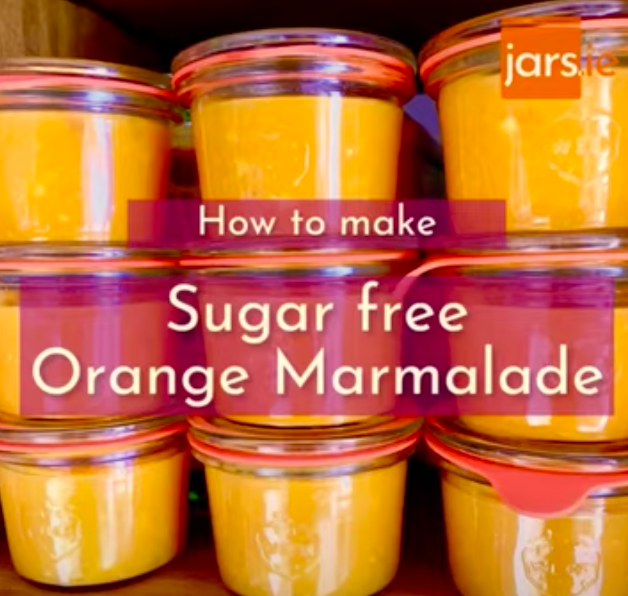Sugar free Orange Marmalade
Do you really need sugar when making marmalade?
I asked myself this question many times when I became more conscious about the food I eat. I consumed a lot of sugar every day, and when cutting back I looked at the products that I enjoyed regularly that contain high percentages of sugar – such as marmalades and jams. Here’s a recipe for making sugar free orange marmalade. But of course you can add a little or a little more sugar, just to your taste. The process is pretty much the same. And with Weck Jars you don’t need to worry about the marmalade go bad, as you re-heat these jars after filling them, so that it does preserve perfectly.
What role does sugar play in marmalade?
Of course it’t there for the taste. As humans we’re trained to like sweet product as these give us energy, so by adding sugar our food usually tastes better. However, when I cut back on sugar, over time my taste changed and after a while I liked things more that are less sweet (for example, I now prefer coffee that is not sweetened).
But sugar also preserves food. Your 1kg pack of sugar does not really go bad in your cupboard. If you add sugar to your food, it just will be good to eat for longer.
But wait, we actually preserve marmalades and jams by heating them up / boiling and then heating up again during the preservation process.
If the bacteria are destroyed, marmalades won’t go bad anyway, right? That’s correct. You don’t need sugar for preservation when making marmalade, it won’t go bad. But: After opening the jar, bacteria get in so you will need to consume quickly. The conservation function of the sugar would help after opening the jar, not when storing closed. That’s the reason why you will need smaller jars for sugar free product – or you just need to consume all of it very quickly after opening. 🙂
Full recipe for sugar free orange marmalade:
1) Squeeze oranges
For around 8 little 80ml jars you will need around 1 net of oranges. I you want to save yourself time (and energy) and if you can find them, it’s best to use juicy oranges without the seeds. Personally I like when you have littles bits of flesh in the marmalade – but if you prefer without the bits just use the juice.

2) Bring to boil and add pectin
If you used ready made jam sugar, this would already contain some form of jelling agent. As we don’t want to use that, we will need some other form of jelling agent (otherwise we would produce juice). I tried to be as natural as possible, see the link below of the one the pectin that I usually use, it’s completely natural pectin made of apples (apples naturally contain a certain level of pectin). For around 8 little 80ml jars you will need around 1 net of oranges. I you want to save yourself time (and energy) and if you can find them, it’s best to use juicy oranges without the seeds. Personally I like when you have littles bits of flesh in the marmalade – but if you prefer without the bits just use the juice. The amount of pectin to use depends how runny/thick you want the marmalade to be. I use around 26g per 1kg of fruit, what might be a good starting point for you. But feel free to adapt to your preference.
When using pectin you will need to be careful as it forms lumps very easily. Just add small amounts and stir in quickly.

Boil for around 5 minutes.
3) Fill into jars
Use small jars to avoid your marmalade go bad after opening.
Close and seal them with rubber rings and clamps.

4) Heat up
Your marmalade is nearly ready. You need to heat everything up again, to destroy all bacteria and yeasts that still might be present inside the jars and that might make you marmalade go bad.
You can use a large saucepan and boil everything for around 20 minutes. I tend to use a wok, put some water in and steam for around 25 minutes in these asian bamboo pots – the result is the same. Just make sure that the marmalade is heated to at least 90 degrees inside.

5) Cool down
Let the jars cool down to room temperature. The marmalade inside will contract a little when cooling down, what creates a vacuum inside. This will hold the lid very tightly on the jar, you can remove the clamps now, they are not needed anymore.

Enjoy. 🙂




